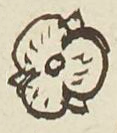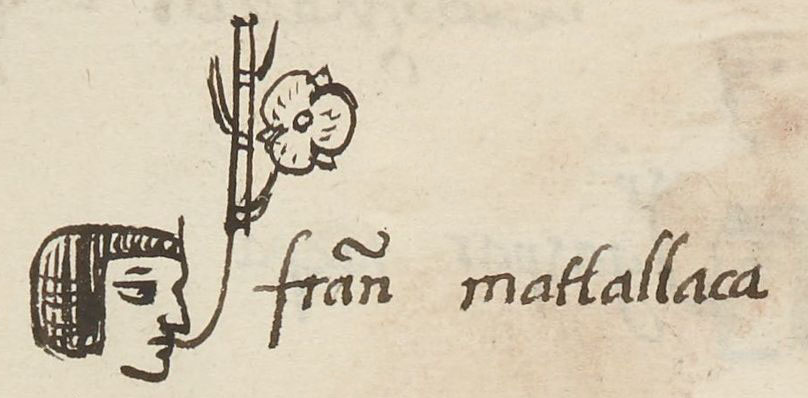matlalin (MH486r)
This black line drawing of the element for the color blue-green (matlalin, also seen as matlalli), has been carved from the compound personal name, Matlalaca. What we see here is not colored, and it appears to be a flower. It has three rounded petals and points between them. The petals have some texturing.
Stephanie Wood
An article, "Colorantes Naturales," in México Desconocido, states that the color texotli was made from mixing clay with the the intense turquoise blue that comes from a flower called Matlalxochitl. Many words with the root "matlal" will point to blue in translations, but matlalin is also said in some sources to be a dark green. Since greens and blues were seen as essentially the same color or a range of colors, a definitive assessment of this glyph is a challenge, especially given that it is drawn in black and white. Dark green flowering herbs may be what is behind Matlalaca, the compound from which this atomic was carved.
Stephanie Wood
1560
Jose Aguayo-Barragan
flowers, flores, colors, colores

matlal(in), dark green or blue, https://nahuatl.wired-humanities.org/content/matlalin-0
matlal(tic), azure, blue or green, https://nahuatl.wired-humanities.org/content/matlal
matlalatl, blue or green water, https://nahuatl.wired-humanities.org/content/matlalatl
Matrícula de Huexotzinco, folio 483r, World Digital Library. https://www.loc.gov/resource/gdcwdl.wdl_15282/?sp=51&st=image
This manuscript is hosted by the Library of Congress and the World Digital Library; used here with the Creative Commons, “Attribution-NonCommercial-ShareAlike 3.0 License” (CC-BY-NC-SAq 3.0).







